Ford Puma vs Peugeot 308 SW – Which car suits you better?
Both models have their strengths – but which one suits you more?
Compare performance, efficiency, price and space directly: Ford Puma or Peugeot 308 SW?
Costs and Efficiency:
Price and efficiency are often the first things buyers look at. Here it becomes clear which model has the long-term edge – whether at the pump, the plug, or in purchase price.
Ford Puma has a distinct advantage in terms of price – it starts at 24800 £, while the Peugeot 308 SW costs 30100 £. That’s a price difference of around 5349 £.
Fuel consumption also shows a difference: Peugeot 308 SW manages with 0.80 L and is therefore convincingly more efficient than the Ford Puma with 5.40 L. The difference is about 4.60 L per 100 km.
In terms of energy consumption, the advantage goes to the Ford Puma: with 13.10 kWh per 100 km, it’s to a small extent more efficient than the Peugeot 308 SW with 15.30 kWh. That’s a difference of about 2.20 kWh.
As for range, the Peugeot 308 SW performs hardly perceptible better – achieving up to 410 km, about 34 km more than the Ford Puma.
Engine and Performance:
Power, torque and acceleration are the classic benchmarks for car enthusiasts – and here, some clear differences start to show.
When it comes to engine power, the Peugeot 308 SW has a to a small extent edge – offering 195 HP compared to 168 HP. That’s roughly 27 HP more horsepower.
In acceleration from 0 to 100 km/h, the Ford Puma is barely noticeable quicker – completing the sprint in 7.40 s, while the Peugeot 308 SW takes 7.70 s. That’s about 0.30 s faster.
In terms of top speed, the Peugeot 308 SW performs minimal better – reaching 225 km/h, while the Ford Puma tops out at 210 km/h. The difference is around 15 km/h.
There’s also a difference in torque: Peugeot 308 SW pulls minimal stronger with 300 Nm compared to 290 Nm. That’s about 10 Nm difference.
Space and Everyday Use:
Cabin size, boot volume and payload all play a role in everyday practicality. Here, comfort and flexibility make the difference.
Both vehicles offer seating for 5 people.
In curb weight, Ford Puma is a bit lighter – 1316 kg compared to 1475 kg. The difference is around 159 kg.
In terms of boot space, the Peugeot 308 SW offers to a small extent more room – 608 L compared to 523 L. That’s a difference of about 85 L.
In maximum load capacity, the Peugeot 308 SW performs clearly perceptible better – up to 1634 L, which is about 351 L more than the Ford Puma.
When it comes to payload, Peugeot 308 SW minimal takes the win – 500 kg compared to 469 kg. That’s a difference of about 31 kg.
Who comes out on top?
Overall, the Peugeot 308 SW shows itself to be is largely superior and secures the title of DriveDuel Champion.
It convinces with the more balanced overall package and proves to be the more versatile choice for everyday use.
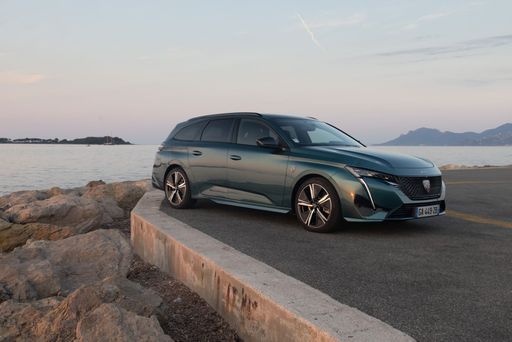
Peugeot 308 SW
Ford Puma
The Ford Puma presents itself as a stylish compact SUV with a distinctive design that combines practicality with a dynamic driving experience. Its sleek lines and sporty aesthetics make it stand out on the road, while the interior offers a comfortable and tech-savvy environment. With an emphasis on efficiency and a smooth drive, the Ford Puma is well-suited for both urban commutes and countryside adventures.
details @ puma.fordpresskits.com
@ puma.fordpresskits.com
 @ puma.fordpresskits.com
@ puma.fordpresskits.com
 @ puma.fordpresskits.com
@ puma.fordpresskits.com
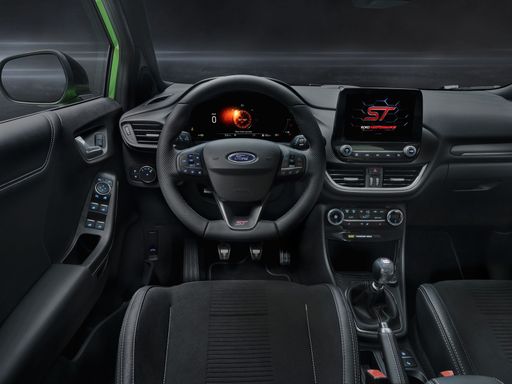 @ puma.fordpresskits.com
@ puma.fordpresskits.com
Peugeot 308 SW
The Peugeot 308 SW impresses with its stylish design and practical nature, making it a standout in the estate car category. Its spacious interior is complemented by a high-quality finish, offering comfort for both the driver and passengers. The vehicle also boasts advanced technology features, ensuring a modern and enjoyable driving experience.
details @ media.stellantis.com
@ media.stellantis.com
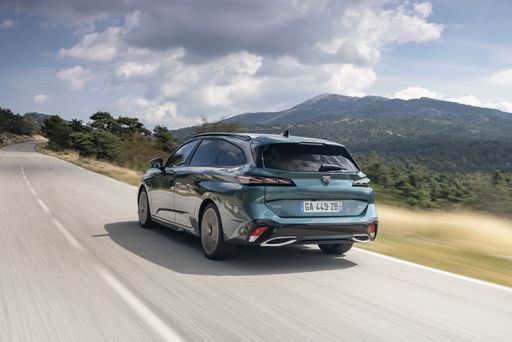 @ media.stellantis.com
@ media.stellantis.com
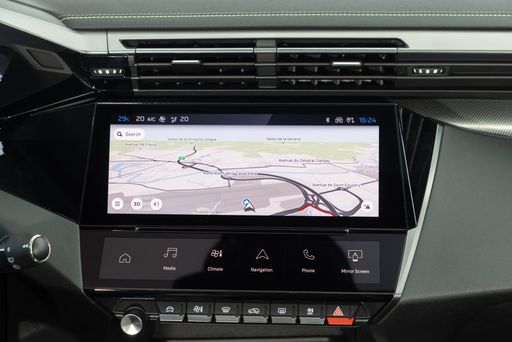 @ media.stellantis.com
@ media.stellantis.com
 @ media.stellantis.com
@ media.stellantis.com
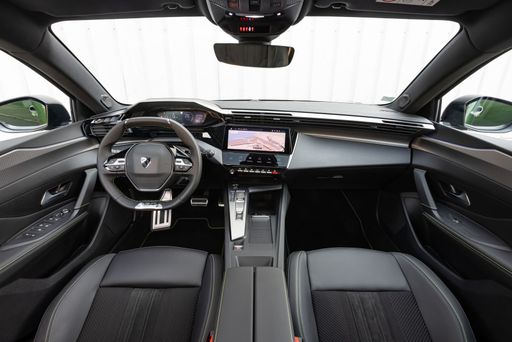 @ media.stellantis.com
@ media.stellantis.com

|

|
|
|
|
Costs and Consumption |
|
|---|---|
|
Price
24800 - 36300 £
|
Price
30100 - 42700 £
|
|
Consumption L/100km
5.4 - 5.9 L
|
Consumption L/100km
0.8 - 5.1 L
|
|
Consumption kWh/100km
13.1 - 13.9 kWh
|
Consumption kWh/100km
15.30 kWh
|
|
Electric Range
361 - 376 km
|
Electric Range
78 - 410 km
|
|
Battery Capacity
43 kWh
|
Battery Capacity
51 kWh
|
|
co2
0 - 135 g/km
|
co2
0 - 134 g/km
|
|
Fuel tank capacity
42 L
|
Fuel tank capacity
42 - 53 L
|
Dimensions and Body |
|
|---|---|
|
Body Type
SUV
|
Body Type
Estate
|
|
Seats
5
|
Seats
5
|
|
Doors
5
|
Doors
5
|
|
Curb weight
1316 - 1563 kg
|
Curb weight
1475 - 1791 kg
|
|
Trunk capacity
456 - 523 L
|
Trunk capacity
467 - 608 L
|
|
Length
4186 - 4226 mm
|
Length
4636 mm
|
|
Width
1805 mm
|
Width
1852 mm
|
|
Height
1550 - 1555 mm
|
Height
1442 mm
|
|
Max trunk capacity
1216 - 1283 L
|
Max trunk capacity
1402 - 1634 L
|
|
Payload
367 - 469 kg
|
Payload
409 - 500 kg
|
Engine and Performance |
|
|---|---|
|
Engine Type
Electric, Petrol MHEV
|
Engine Type
Diesel, Electric, Petrol MHEV, Plugin Hybrid
|
|
Transmission
Automatic, Manuel
|
Transmission
Automatic
|
|
Transmission Detail
Reduction Gearbox, Manual Gearbox, Dual-Clutch Automatic
|
Transmission Detail
Automatic Gearbox, Reduction Gearbox, Dual-Clutch Automatic
|
|
Drive Type
Front-Wheel Drive
|
Drive Type
Front-Wheel Drive
|
|
Power HP
125 - 168 HP
|
Power HP
130 - 195 HP
|
|
Acceleration 0-100km/h
7.4 - 9.8 s
|
Acceleration 0-100km/h
7.7 - 10.9 s
|
|
Max Speed
160 - 210 km/h
|
Max Speed
170 - 225 km/h
|
|
Torque
170 - 290 Nm
|
Torque
230 - 300 Nm
|
|
Number of Cylinders
3
|
Number of Cylinders
3 - 4
|
|
Power kW
92 - 124 kW
|
Power kW
96 - 144 kW
|
|
Engine capacity
999 cm3
|
Engine capacity
1199 - 1598 cm3
|
General |
|
|---|---|
|
Model Year
2025
|
Model Year
2023 - 2025
|
|
CO2 Efficiency Class
A, D
|
CO2 Efficiency Class
D, A, C, B
|
|
Brand
Ford
|
Brand
Peugeot
|
Is the Ford Puma offered with different drivetrains?
The Ford Puma is offered with Front-Wheel Drive.
The prices and data displayed are estimates based on German list prices and may vary by country. This information is not legally binding.
